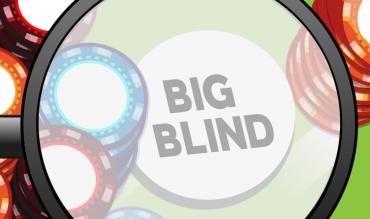Updated on August 23, 2023
This basic strategy guide will deliver our strategic outlook when playing in the BB (big blind). We’ll select examples from NLHE cash games, but many of the concepts will translate into other formats such as poker tournaments or PLO.
Let’s quickly recap on key features of the big blind:
- We are forced to invest 1bb before seeing our hole cards.
- We “close the action” preflop (in most cases. See the box ‘closing the action’)
- We act last preflop, but typically first postflop (unless playing against the small blind).
Table of Contents
The Big Blind – An Overview
The fact that we have to invest a big blind without seeing our hole cards is a significant disadvantage. However, it does mean that we get an effective discount on any preflop cold call. For example, if we face a 3bb open-raise, we only need to invest an additional 2bb to see the flop.
Closing the Action
Whether or not we “close the action” in the big blind depends on the action before us.
For example, if one player open-raises and everyone either calls or folds, we are guaranteed to see a flop when cold calling in the big blind.
However, if there is a raise plus a re-raise (or a limp plus a raise), it means another player will need to act after us preflop, so we won’t be closing the action.
The fact that we are also guaranteed to see a flop in scenarios where we are closing the action means that wide cold-calling strategies are typically incentivised when in the Big Blind.
If we were to summarise our strategic outlook while in the BB it would be as follows -
Strategic Outlook in the BB
We cold call wider here than any other position at the table.
Stats:
- Recommended average cold call frequency: Around 26%
- Recommended average 3bet frequency: Around 8%
(Remember that these stats account for a range of different open sizings)
Sample Ranges From the BIG BLIND
Let’s take a look at some sample defending hand ranges from the big blind when playing a 100bb NLHE cash game. Remembering precise combinations is not important, but we should have a good general feel for how wide we go in each spot.
BB Defence vs BTN Open
- Purple: Re-raise (3bet) range
- Blue: Cold calling range
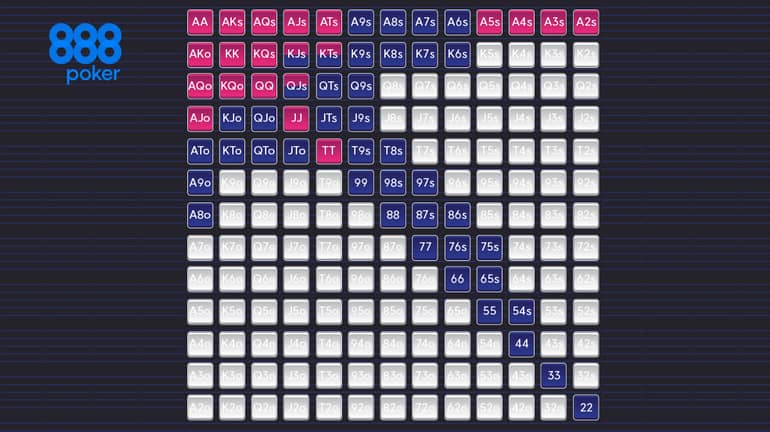
This sample range is for defending against a BTN 3bb open-raise. If the BTN open-raises smaller, we should defend wider, but more on that later. Note that the 3bet (re-raise) range is heavily weighted towards high-equity holdings. It makes sense, not to 3bet-bluff speculative holdings in most games since players are not folding as much as they should when facing 3bets.
BB Defence vs Lojack Open
- Purple: Re-raise (3bet) range
- Blue: Cold calling range
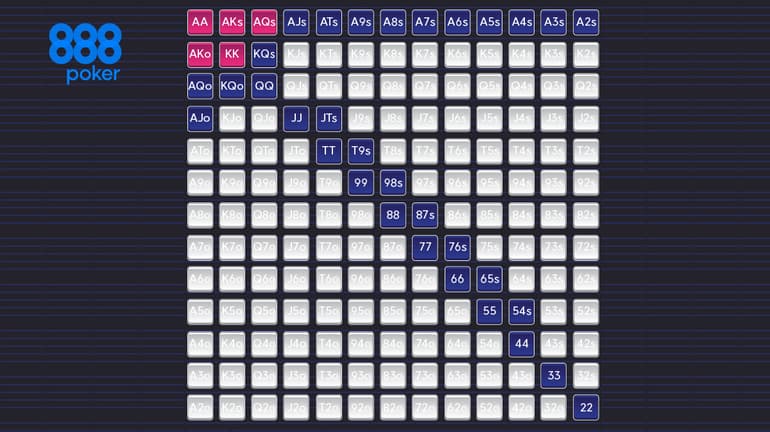
The crucial difference should be readily apparent. We defend a tighter range of holdings from the BB when facing an open from an earlier position.
BB Defence vs SB Open
- Purple: Re-raise (3bet) range
- Blue: Cold calling range
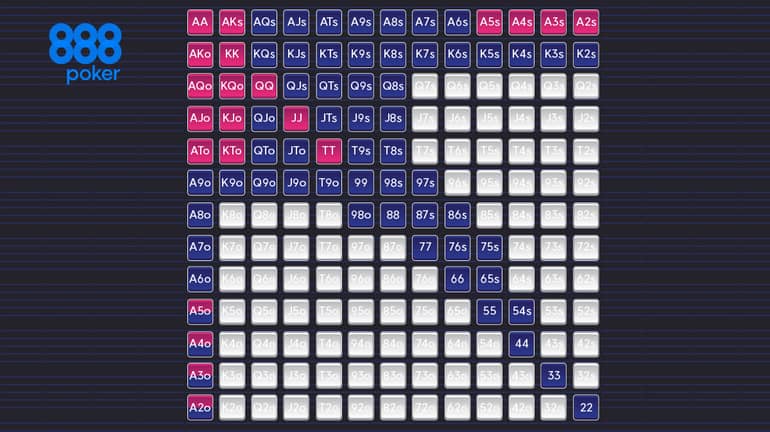
When we face an SB open-raise, we are guaranteed position postflop. We can hence defend a wider range of hands vs the SB than we can against the BTN.
Relevant Adjustments
Understanding that the sample ranges should be used as a rough guide rather than a set rule is essential. In practice, we will end up changing these defending ranges based on several variables. A good understanding of these variables will help us make high-quality decisions on the fly.
- Villain’s sizing – The larger our opponent’s open-raise sizing, the tighter we defend.
- Formation – The later our opponent’s position, the wider we can defend.
- Reads – E.g. our opponent folds too much to 3bets, we can 3bet more aggressively.
- Villain skill - If our opponent is a bad poker player, we can generally play more hands.
Other Scenarios
- Iso-Raising – This situation is where we raise from the BB facing, either an open-limp or an SB complete. Facing an SB complete, we can play very aggressively, perhaps raising around 50% of hands since SB is unlikely to be very strong plus we are guaranteed position postflop.
Versus an open-limp from other positions (e.g. the BTN), we should be much more reserved with our approach to iso-raising, mostly just raising premiums. We need a tighter range to be able to play profitably out of position.
Besides, even if we don’t iso-raise, we get to see a free flop when we check back.
* Iso-raise – A pre-flop raise made against a limper.
- Overcalling/Squeezing – Overcalling and squeezing are terms which refer to 3-way scenarios. When facing two opponents, we generally prefer to 3bet (squeeze) a tighter range and weight our calls (overcall) towards speculative hands with good suited/connected potential.
* Overcall – A call after a player has already called before us on the current street.
* Squeeze – A 3bet made after there has already been at least one caller vs an open raise.
For the sake of comparison here is what a BB squeezing range might look like when facing a BTN open and SB call.
- Purple: Re-raise (squeeze) range
- Blue: Overcalling range
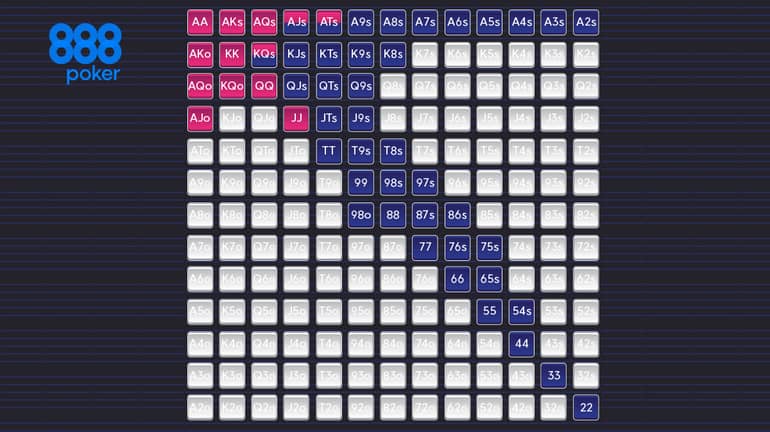
In Conclusion
We recognise that playing from the big blind presents unique challenges and specific strategic advantages. While it's a disadvantage to invest a big blind without seeing our hole cards, it's important to realise that this grants us an effective discount on any preflop cold call. This means that even in the face of a 3bb initial raise, we only need to invest an additional 2bb to see the flop.
Overall, the big blind position demands a carefully considered strategic approach. We must be attuned to the game's context, adjusting our strategy based on our opponents and their position at the table. By understanding and exploiting the subtleties of the big blind position, we'll be better prepared to make informed decisions and, in turn, enhance our overall winrate. Remember that while specifics may vary between NLHE cash games and other formats, the core ideas we've discussed in this guide have the potential to bolster your play in diverse contexts, such as poker tournaments and Pot-Limit Omaha. So, continue honing your skills and refining your strategic approach to the big blind position to maximize your success at the tables.
Originally Published on February 29, 2020
